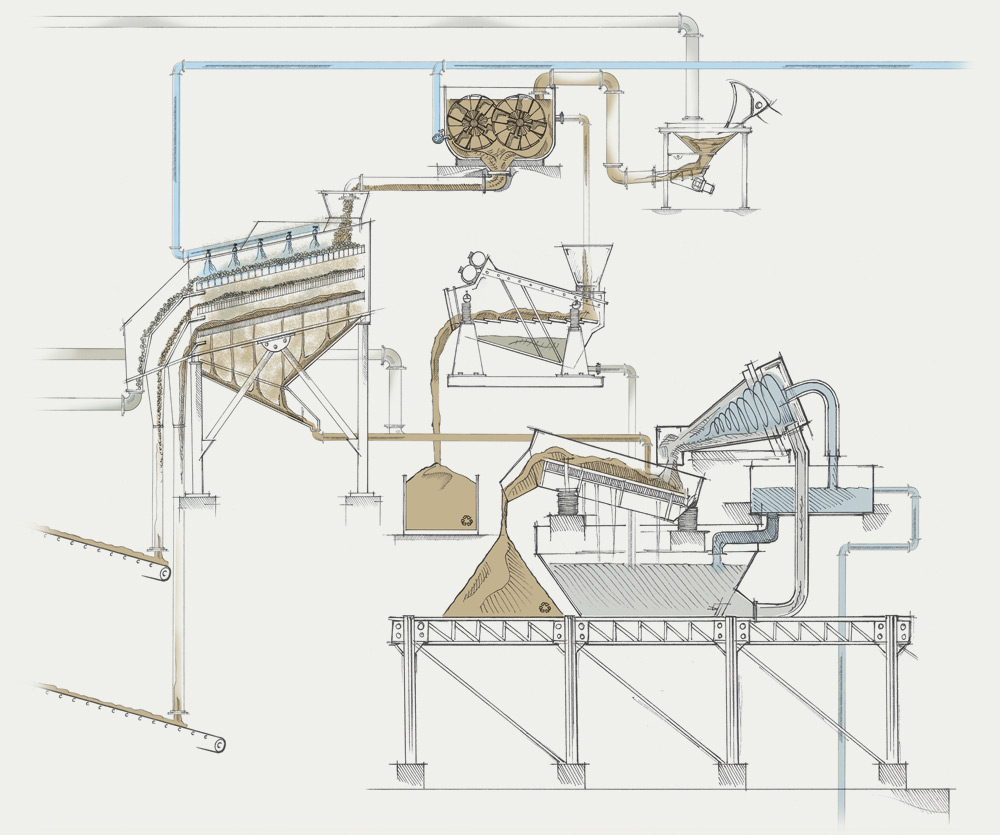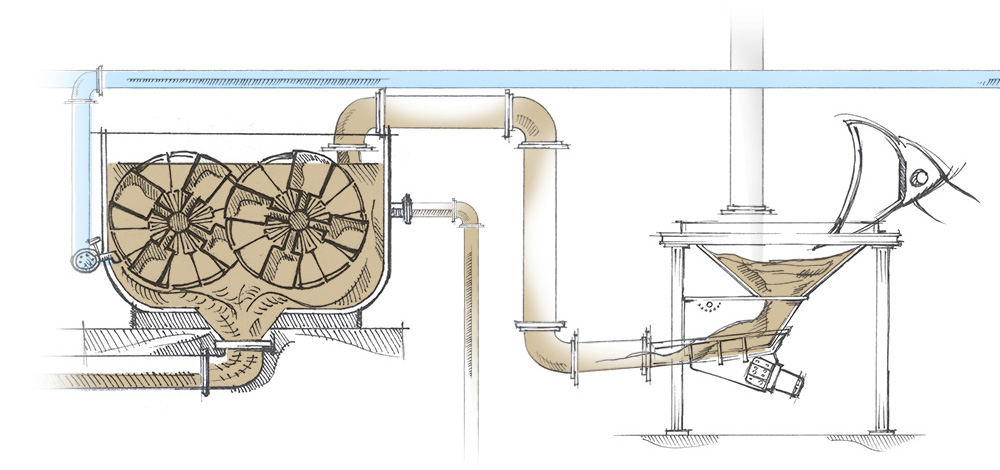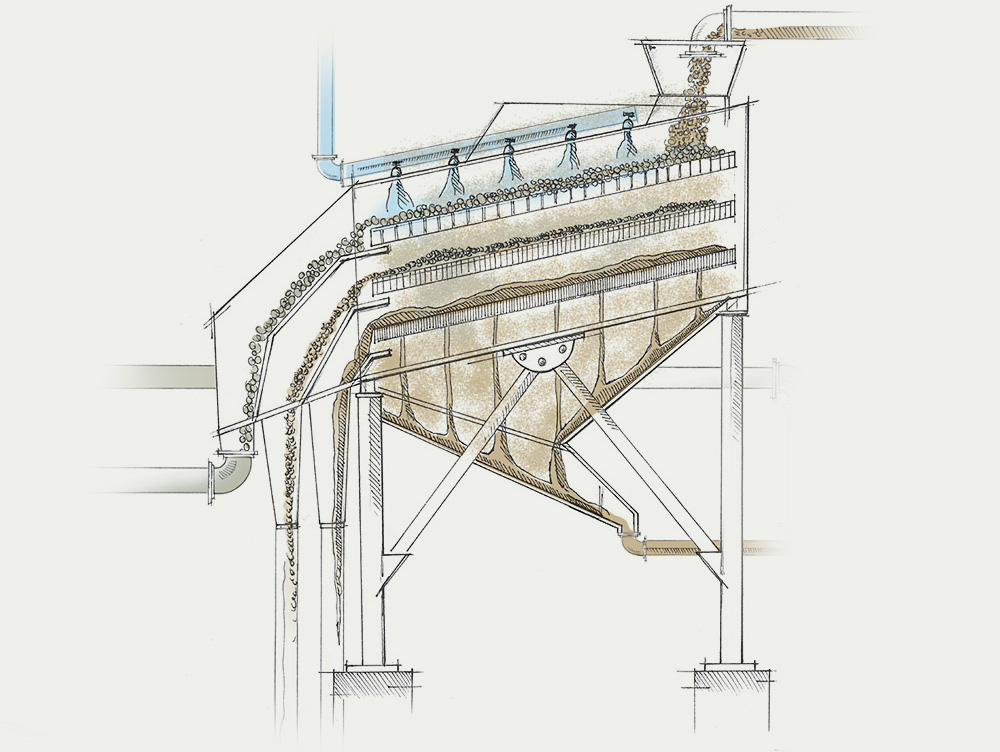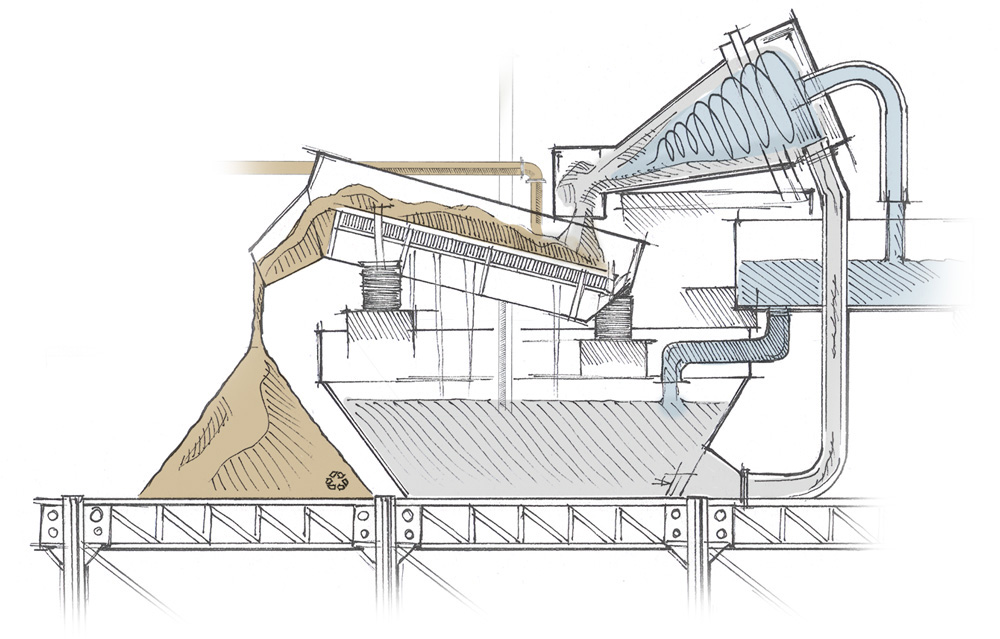Fines recovery
The flow of washing water drags all the fine and very fine particles.
The recovery of the fine particles takes place with a centrifugal operation carried out by a hydrocyclone and dewatering carried out by a
vibrating dryer.
The machine, which we employ for this purpose, is a
fines recovery group.
This group is made up by a tank where wastewater is collected, a pump, a cyclone and a vibrating dryer with a reverse slope.
All the machines and equipment (pump, hydro cyclone, pipes and connections) that come into contact
with the mixture of water and fines at a high speed, are lined with anti-abrasive rubber or are made of extremely hard steel alloys.
The waste water from the washing is full of fine particles, and is sent to the collection tank.
A pump sucks the mixture of water and fines and sends it to a hydrocyclone.
Inside the hydrocyclone, a centrifugal force ejects the thickened still fluid solid particles from the conical part
while the water
and the silt are expelled from the upper part.
The dense mixture of particles and water falls onto the polyurethane net of the vibrating dryer,
where a bed of fines is formed over the net, and acts as a filter. The solid mass is thus dehydrated.



